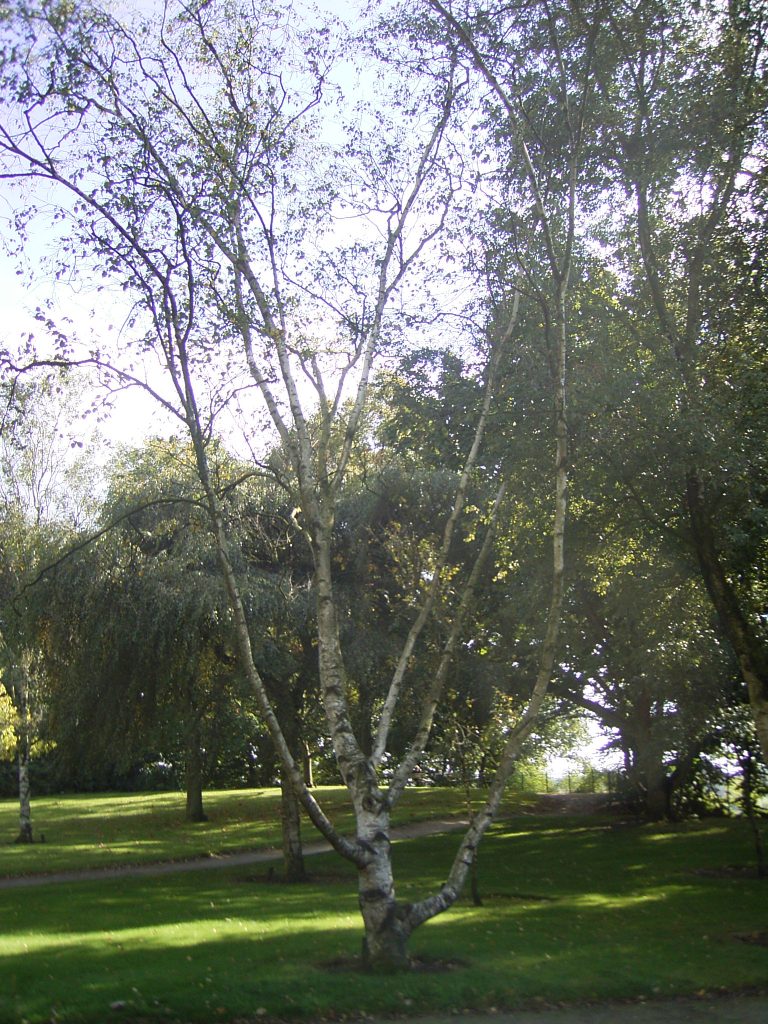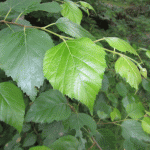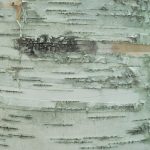Scientific name: Betula papyrifera

Paper birch tree
Identification
-
Leaves are oval or heart-shaped, have serrated edges
-
Bark is white and peels in strips in older trees
-
Fruit looks like a cone, about 1 inch long
-
Small to medium size
Status
- Native
Interesting Facts
- Various parts used to make paper, fuel, beer, shampoo, soap, vinegar, wine, tea
- Different parts of the tree are a food source for moose, deer, beavers, hares, birds, porcupines, and other small mammals
- Native Americans used the trees to make baskets and canoes
- Has medicinal uses- for example, used to treat dysentery

Paper birch leaves

Paper birch bark
References
Virginia Tech Department of Forest Resources and Environmental Conservation. (2016). Paper birch. Retrieved from http://dendro.cnre.vt.edu/dendrology/syllabus/factsheet.cfm?ID=14
United States Department of Agriculture Natural Resources Conservation Service. (n.d.). Plant Guide: Paper Birch. Retrieved from https://plants.usda.gov/plantguide/pdf/pg_bepa.pdf
United States Forest Service. (n.d.). Index of Species Information Species: Betula papyrifera. Retrieved from https://www.fs.fed.us/database/feis/plants/tree/betpap/all.html
Image Credits
Paper birch tree: "Betula papyrifera var. commutata" by TeunSpaans is licensed under CC BY-SA 3.0
Paper birch leaves: "Betulapa pyrifera" by Homer Edward Price licensed under CC BY 2.0. Image cropped.
Paper birch bark: "The bark of a Paper Birch tree (Betula papyrifera) growing in Hollis, New Hampshire" by Rob Duval is licensed under CC BY-SA 3.0. Image cropped.Cropped image licensed under CC BY-SA 4.0.